4 Big Mistakes to Avoid With Your Staffing Data
June 30, 2015
Do you consider yourself a hoarder? You may be thinking to yourself: “I’m not like one of those crazy people on cable TV!” Really? What if I were to toss your cell phone in the trash, delete your Social Media accounts, and wipe clear your computer. Just the thought of losing all your personal data might be enough to break out in a cold sweat. In reality, we’re all hoarders, but our obsession lies with a different type of collection: data.
The same goes for companies. According to research completed by IBM®, 90% of the world’s data has been created in the last two years. A portion of that is personal data, but the majority is generated from businesses and tech firms. There’s a ton of information being gathered, but many companies struggle with how to leverage their data. Along with the potential for good, there come many potential pitfalls in regards to storing, managing, and using your company’s data. Luckily for you, we’ve identified the most common corporate data blunders along with simple remedies to ensure that your data dream doesn’t turn into a nightmare.
Here are the top 4 biggest mistakes you can make with your data:
1. Too few data back-ups (or none at all!)
In a 2011 study completed by Symantec®, only 50% of respondents stated that their company had a data recovery plan in place. Perhaps even more disturbing, of the companies that had a plan in place, only 28% had actually tested their back-up solution to verify it would work. Are you in the 50% without a data recovery plan? Servers crash and hard drives fail. Power outages, fires, and natural disasters are rare but do happen. If you were to lose all of your company’s data today, would you still be in business tomorrow? What data back-up system do you have in place and how often are you backing up? These are critical questions that you do not want to be answering after a major hardware crash.
The Solution: Preparing in advance and having a set of protocols in place is the key to preventing unnecessary data loss. Schedule data back-ups to be performed on a nightly basis. Make sure that those back-ups are being saved to an off-premise server so if your office building is flooded or experiences a massive power outage, your data will be safely secured at an external location. This is an area where cloud computing may be worth a look. Cloud backups can be initiated by partnering with an off-site data center, which can provide a secure environment to store servers. When researching site options, look for a Tier 3 or Tier 4 data center. High tier data centers offer state-of-the-art facilities, top level security, full back-up power generators, and can guarantee greater than 99.9% uptime. Once you pick a data center, you can set-up automatic nightly backups of your server files to the cloud, ensuring that your data is preserved safely and securely.
2. Sacrificing accuracy and completeness for time
We’re all busy. During a typical workday, many of us are bombarded with non-stop emails, tossed into impromptu meetings, or thrown other unexpected curve balls that prevent us from accomplishing the work items we actually had planned to do. As a result, we’re all looking for a time management edge. It can be tempting to cut tasks that seem to be less essential or can be deferred until later. Data entry and record keeping is one of those areas. In the staffing and recruiting industry, this could mean neglecting to fill in complete information for new Applicants, Job Orders, or Clients. “We’ll get to the details later…” may be a common theme throughout the office. The problem is that “later” never comes and incomplete records can spread rapidly throughout the system, hindering your operational efficiency.
The Solution: Taking extra time and care to ensure accurate data collection and record keeping will ultimately save time in the future and prevent headaches down the line. If time management is an issue, Barb Bruno, CPC, CTS, highly respected staffing and recruiting trainer and speaker, offers several suggestions. She recommends making a list of six critical “non-negotiable” items to accomplish each day. If emails are overwhelming, she suggests setting aside time at the beginning, middle and end of the day to reply to messages. Other than those three times, stay away from your inbox and the distractions that come with it. By compartmentalizing your day, you’ll be able to focus on completing your priority items, allowing you to concentrate on the details when it comes to creating and maintaining your data system and records.
3. Relying on free software
It can be tempting to try to run your business using freeware applications or old standbys like Microsoft Office® programs. The problem with relying on Excel® or other generic utilities is that you are forced to create ad hoc solutions on the fly. Nothing is integrated. All of your data ends up scattered among Word docs, spreadsheets, and cobbled together databases. This results in a total lack of an integrated CRM system, as well as being constantly forced to compromise and create workarounds. The truth is that there is no such thing as “free” software if it means wasting time and energy trying to get around all of the application’s shortcomings.
The Solution: The price of entry is worth the increased efficiency that dedicated staffing software can provide. Investing in a quality staffing software application tailored to the staffing industry can greatly enhance sales and marketing coordination, boost efficiency, and maximize revenue opportunities. When researching staffing software vendors, always take the time to go through an in-depth product demonstration. The purpose of the demonstration is to make sure that the system will address all of your needs. Complete front and back office integration is especially beneficial for companies processing payroll and billing in house. Some systems can process all the way through to the financials. Other key features to look for include mobile capabilities and robust reporting functionality such as Dashboards. Portals used as customer and candidate “self-service tools” enhance customer service and build relationships with your customers and candidates. A fully featured staffing software system in place can help take your productivity to a much higher level.
4. Not maximizing reporting capabilities
One of the biggest mistakes that you can make with your staffing data analytics is not using it. Sounds basic, right? The key is not relying on simply stockpiling data or using your software as a data dump. You may have a killer CRM system in place, but if you’re not extrapolating the data to create useful analytics, you end up simply compiling a data warehouse and gobbling up server space.
The Solution: Companies can be seduced by the concept of collecting “Big Data”, but the path to success is understanding how to harness your data to gain relevant insights. First, you should decide upon KPIs or Key Performance Indicators, which are a series of metrics that are the most important indicators of success for your business. Once you have a list of KPIs, you can develop special reports that highlight them. If you’re interested in visual reporting, Dashboards can be a great tool for viewing quick analytics on the fly and visually rich graphs can lend further insight than a printed report. Another strategy for maximizing your data use is not limiting reporting and analytical tools to top-level management. For less sensitive data, it is beneficial to open up reporting capabilities to employees by giving them access to relevant metrics. This can assist employees with tracking KPIs that are most pertinent to their own job responsibilities and success, which can ultimately lead to improved performance.
The large amount of data available today is a tremendous opportunity for companies to gain greater understanding of their customers, market conditions, and overall business operations. With a little preparation, companies can easily avoid stumbling into nightmare scenarios involving their data. By setting up reliable backups, focusing on data accuracy, implementing the right software, and maximizing reporting, companies can take full advantage of their data to gain valuable business intelligence.
Author: Mike Roeslmeier is the Data Visualization Specialist at Automated Business Designs, Inc., software developer of Ultra-Staff staffing software for the staffing and direct hire industry. Ultra-Staff is a full-featured business solution with components for Front Office, Back Office, Mobile and Web Suite. For more information on Ultra-Staff, take the first step with a Discovery Meeting!
Written by Terri Roeslmeier
 Terri Roeslmeier is the Founder and CEO of Automated Business Designs and has been servicing the staffing industry since 1982 with the latest staffing software innovations.
Terri Roeslmeier is the Founder and CEO of Automated Business Designs and has been servicing the staffing industry since 1982 with the latest staffing software innovations.

